Chinmay Malaviya and Charlie Depman, Co-founders of Ridepanda, on the Rapid Evolution of Mobility
Chinmay Malaviya (left) and Charlie Depman (right) met in 2020 while working at two first-generation micro-mobility companies (Bird & Lime). Identifying a need within the industry for longer rider-vehicle relationships and greater vehicle optionality, Chinmay and Charlie founded Ridepanda, a one-stop shop for micro-mobility benefits that empowers employers to offer subsidized micro-mobility solutions to employees.
We sat down with Chinmay and Charlie to discuss the Ridepanda’s origin story, how the company is making micro-mobility more accessible and affordable, and the industry’s future from a regulatory and technological perspective (video here). For more information on open roles at Ridepanda, visit their job board here. For more on Blackhorn’s investment in Ridepanda, see our investment announcement here
Tell us about your entrepreneurial path, and the creation of Ridepanda.
(Chinmay) There have been many Panda adventures for me – my first internship was actually at the World Wildlife Fund, which Charlie reminds me was my first “Panda” experience.
In 2012, I joined the early founding team of Foodpanda, a company comparable to DoorDash operating in Southeast Asia. Foodpanda was where I truly learned and fell in love with the meaning of the word “entrepreneur.” To start, entrepreneurship means close proximity to impact. As an entrepreneur, you are not siloed; rather, you stand next to a company and industry’s challenges and opportunities, and are provided the space to attack both in a meaningful, intentional manner. Being an entrepreneur is also synonymous with wearing multiple hats. It was so intellectually stimulating to switch between analyzing an operational issue to a sales issue in the matter of a day – that freedom to continuously address core problems was something I appreciated most about my experience at Foodpanda. Foodpanda was one of the first Internet 1.0 companies offering online payments. While there were varying degrees of hesitation across the locations we served due to fear of fraud and other perceived operational challenges – from Singapore to Thailand to Malaysia – it was incredible to see how we were able to convert the region from cash payments to online payments. Around 2013, we transitioned from a desktop application to a mobile application; as the technology was evolving, I had an intimate viewpoint of the transition.
Most recently, I worked at Lime. Lime was an incredible experience that introduced me to (A) micro-mobility and the challenges surrounding the transportation of people and goods, and (B) the “Silicon Valley approach” to building businesses. On the latter point, my time at Lime illuminated how highly valued product, tech, and data is in Silicon Valley. On the former point, Lime bolstered me with credibility in the micro-mobility space, confidence in the US ecosystem, and the self-awareness that I’m better at building things from zero; I wanted to wear the entrepreneurial hat while working on a meaningful project with individuals I can learn from – individuals like Charlie.
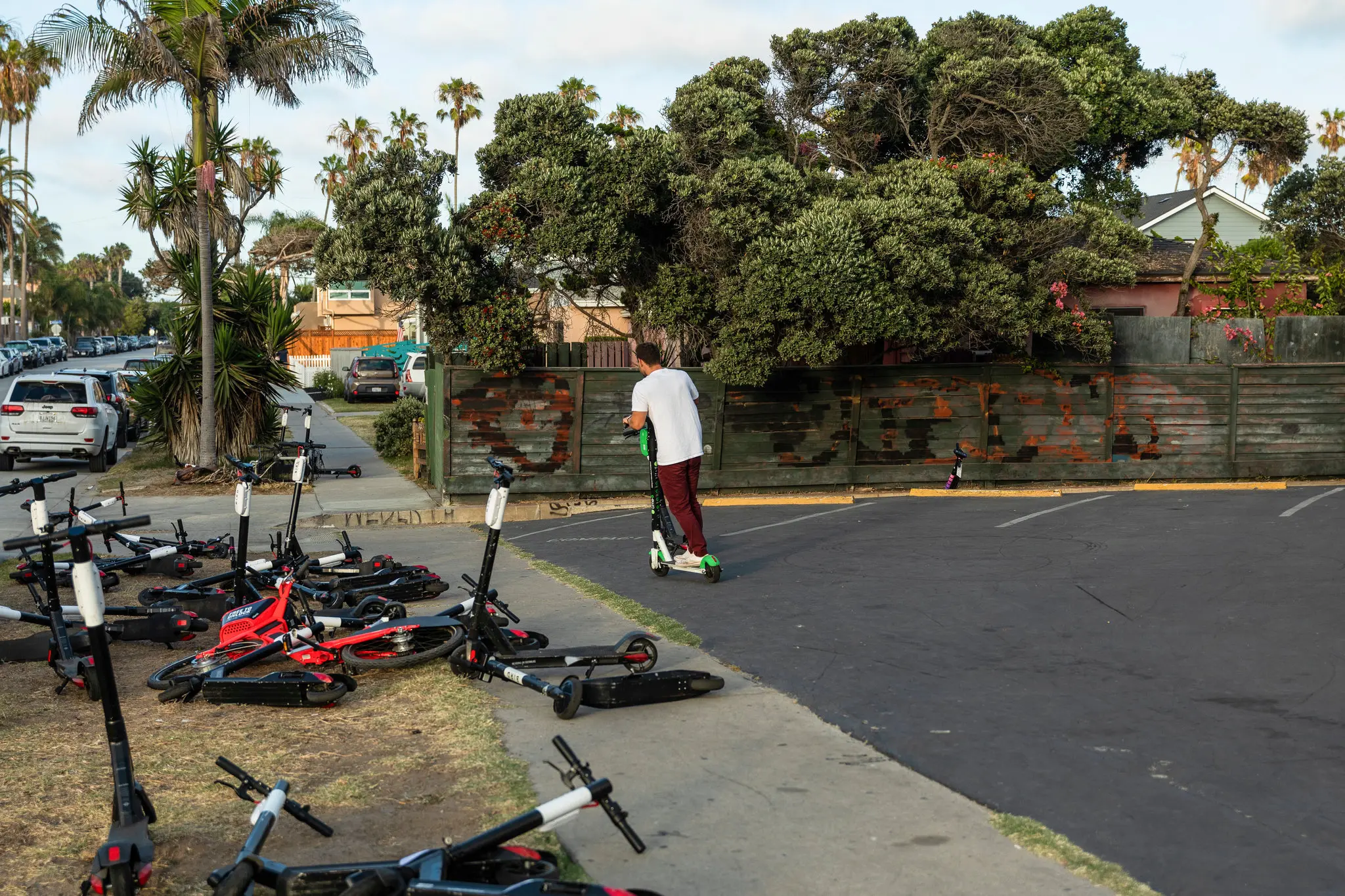
(Charlie) My journey began in China, where I lived for 2.5 years cumulatively. Living in China offered me two major insights. First, I gained insight into the extent of environmental degradation occurring not just in China, but all over the world, and its impact on peoples’ health and happiness; that realization ultimately led me to stop teaching English and start a career at environmental nonprofits. The second major insight I had was around transportation. In large cities such as Shanghai, Beijing, Taipei, or Chongqing, cars are simply not the answer; instead, I saw that micro-mobility devices were convenient options that allow individuals to move in a low impact manner and cities to become more liveable. I can’t recall the number of times I would travel back to San Francisco or New York City, see these enormous SUVs with one person in them, and think to myself: “This cannot be the future if we want to have sustainable cities.”
In my most recent stint in China, I was working at NYU Shanghai as a teacher with dreams of being a sci-fi writer. There, I had an epiphany as I questioned how I could build things beyond dreaming and writing about them. The answer: coding. I audited a coding course at NYU Shanghai, fell in love with programming, and moved to San Francisco to further educate myself. Along the way, I discovered the company Scoot, who were the first to offer shared micro-mobility via smartphones.
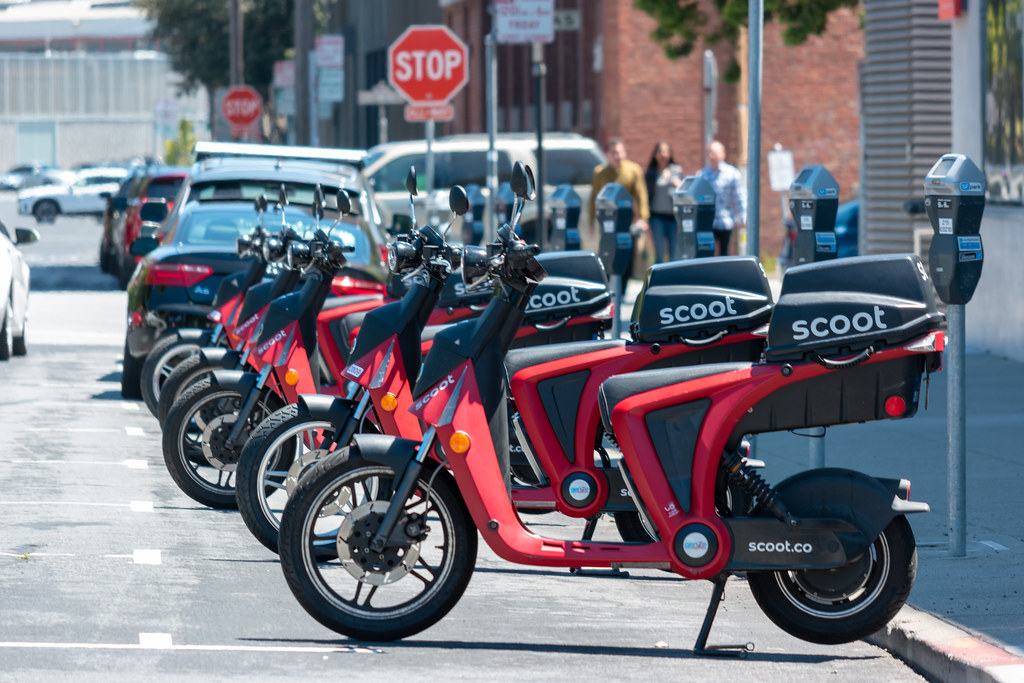
I joined Scoot as one of their first engineers and stayed there for four years. During my time there, Scoot became a multimodal platform – offering e-bikes, scooters, vespa-style sit-down scooters – and I had the opportunity to go back to China and help work on several micro-mobility devices (such as Scoot’s first electric bike). When Scoot was acquired by Bird, this multimodal trend continued and I helped build technology to support multiple vehicle types on Bird’s platform. Bird started providing retail offerings as well. At the beginning of 2020, I met Chinmay, who had a similar experience at Lime (in terms of micro-mobility companies offering multimodal vehicle options and programs with longer-term vehicle relationships), and the Ridepanda platform was born soon thereafter.
What problems are you trying to solve within the transportation sector?
(Chinmay) Given our respective tenures at Bird and Lime, Charlie and I are both very familiar with the transportation sector. During our time at these companies, one fact became increasingly clear. Ultimately, climate change is the biggest challenge facing humanity today; and in the United States, transportation is the #1 cause of emissions. If you break that down, passenger cars make up more than half of those trips. If you double click again, in the large majority of cities, 60% to 70% of passenger car trips are between 0 and 5 miles.
Companies in the space such as Bird and Lime tackled many of these issues and encouraged people to embrace micro-mobility, but we saw an opportunity to further accelerate the transition. E-bikes, scooters, and other form factors were becoming more familiar to commuters; technological evolution was occurring at a rapid pace in the space; and people were, and still are, hungry for alternatives that prioritize their health and wellness while promoting sustainability.
The first generation of micro-mobility companies, such as Lime and Bird, seem to have negative investor sentiment because of challenging unit economics. How do you differentiate yourself in a crowded micro-mobility space?
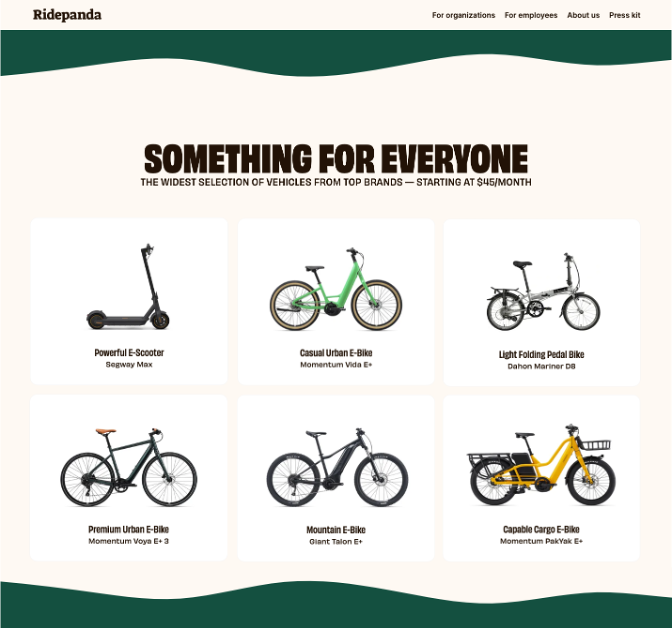
(Charlie) Relative to other scooter sharing companies, we differentiate ourselves in three categories. First, convenience. When you have a Ridepanda subscription, your vehicle is yours; whether you need to go to work, grocery shop, or visit a friend across town, your vehicle is always there for you. That differs from sharing companies, where oftentimes a user must hunt for a vehicle that is nearby, in-service, and charged. Second, reliability. We take good care of our vehicles and our customers take good care of our vehicles. We offer servicing for all of our vehicles through the lifespan of the lease; we also partner with high-quality vehicle manufacturers to provide high-quality vehicles in the first place. And beyond those factors, Ridepanda customers care about the condition of their vehicle because they are the next user. Third, choice. Most sharing companies have a standard model that, while it has had iterations, is built like a tank – the vehicle is built to withstand the various abuses it may run into on the streets. People have differing use cases for their micro-mobility vehicles and come in many shapes and sizes, which a standard model cannot account for. Ridepanda’s offerings can be tailored to a variety of use cases and body types, whether it involves commuting up hills or going long distances on rough terrain.
(Chinmay) There is more scrutiny around micro-mobility. However, that industry-wide scrutiny has pushed us to be better. Lime and other micro-mobility companies have created amazing demand and executed millions of trips, but they have not been able to see the same success when it comes to unit economics and profitability. At Ridepanda, since day one we have prioritized building a healthy and sustainable business while keeping long-term defensibility in mind.
Ridepanda bills itself as a “micro-mobility benefits platform for everyone.” What was the product development process for Ridepanda? How would you characterize the Ridepanda customer experience?
(Charlie) We have been listening to our customers from the beginning. Ridepanda’s first product iteration was our retail platform. At our previous companies, we found that people sought more ownership (in terms of a longer term relationship with their vehicle) and more choice. In the next iteration, we improved by thinking more locally, opening our local service centers called PandaHubs to provide ongoing support. We also saw an opportunity in leasing and subscription to foster a tighter relationship with our customers, which again allowed us to provide that high-touch servicing. With each iteration, we are trying to more deeply integrate these vehicles into our customers’ lives.
Another factor guiding our product roadmap was the issue of accessibility. Many micro-mobility vehicles can cost thousands of dollars. We saw the Ridepanda solution as an opportunity to reduce the cost of micro-mobility through subscriptions, making the price more palatable on a month-to-month basis. There was also an opportunity to make micro-mobility even more accessible with the help of employers, who sought to subsidize micro-mobility to reduce single occupancy car trips, number of parking lots and commuter shuttles used daily, as well as their carbon impact.
Ridepanda pivoted in terms of product focus in early 2022. What advice would you give to founders considering pivoting some aspect of their business? What should be taken into account when making the decision and what should founders keep in mind when executing the transition?
(Chinmay) In terms of what has worked for us, we’ve found it critical to choose a meaningful mission – to focus on something you are passionate about and have expertise in. For Charlie and I, we wanted to accelerate the transition from cars to micro-mobility.
How we have chosen to accomplish that mission, however, has evolved over the lifespan of the company. What pivoting and change comes down to is maintaining a sense of humility and honesty around what is and isn’t working; it comes down to being data driven and selecting clear, relevant KPIs; it comes down to being open to questioning things that may be working today, but may not be the best tomorrow; it comes down to embracing critique. It is a painful process because you put so much time and effort into product development. However, as a leader, you must have the capacity to acknowledge that things may not be at their best, and you have to progress with the mission as your north star.
For early-stage founders, the key pursuit is product-market fit – finding a solution with predictable sources of revenue, a strong path for growth, and an ability to make a strong moat. At the end of the day, we are happy to embrace that our baby is ugly in some aspects, and our goal is to make it better. It all comes down to having a growth mindset.
What do you view as the ultimate value of Ridepanda and to whom?
(Charlie) We see our major value delivered to three main parties. Those are our employers, their employees, and the planet.
On the employer side, we are helping them to reduce their carbon footprint and their scope 3 emissions. We are helping companies to accelerate their return to office, as well as reduce overhead cost (in terms of the parking lot and commuter shuttles). We help promote employee health and wellness – these devices allow people to get exercise before and after work, which studies show benefit employee productivity and retention. For the employees, we give them the opportunity to leave their car at home, commute flexibly on their schedule, and even have some community with other micromobility commuters at work. These devices are also fun – people love them for recreation outside of commuting.
For the planet, we are helping shift behavior for thousands of people – our full-service model with choices for everyone makes it easier for people to choose eco-friendly micromobility devices over polluting cars not only for their commutes but any other short to medium trips around town. Reducing our carbon footprint has never been so important (especially considering all the destructive climate-related events this summer) and we want to make it as frictionless as possible.
In addition, we are giving vehicle vendors – such as Giant and Specialized – a platform to introduce their product to a whole new segment of the market. A lot of our customers are first-time riders or individuals who haven’t been on a bike since they were kids.
Can you speak more about Ridepanda’s adjacent market opportunities? How do you envision the future for Ridepanda?
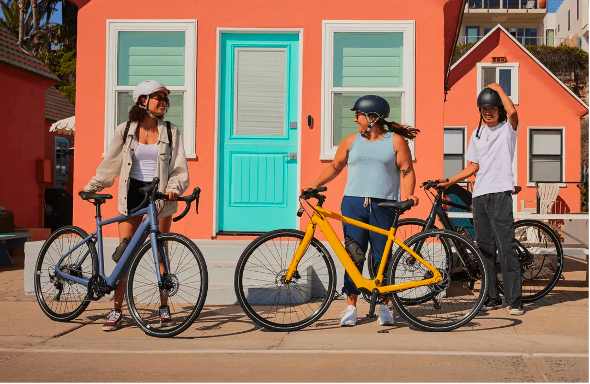
(Chinmay) In terms of future initiatives for employers, we are working closer with employers to amplify the benefits of partnering with Ridepanda – specifically, amplifying the benefits of increased sustainability, accelerated return to office, as well as the agency provided to employees, and the health and wellness increase of riding). We are building tools around those benefits, from measuring CO2 and Scope 3 emissions reductions to reducing integration frictions due to reimbursement in payroll. We are really doubling down with employers on why they are working with us.
We will continue working with third-party small and medium-sized bike shops; we hope to leverage these shops as we provide vehicle servicing, vehicle fulfillment, and test rides. We are also thinking about how we can help people outside of the employee network through D2C subscriptions or by leasing previously used vehicles.
Finally, employee education is an integral part of our vision for Ridepanda. Our goal is not to simply sign a lot of companies and employees; the goal is to change long-term transportation behavior. There is a lot we will have to do around education, but our ultimate vision is to create a network effect, where greater usage of micro-mobility will increase government infrastructure for micro-mobility, which in turn will increase micro-mobility usage.
There is a lot of legislation both supporting and limiting the micro-mobility industry, from the Bicycle Commuter Act to Paris’ ban of rental e-scooters. What do you see as the future of micro-mobility in terms of legislation? Which cities are getting it right? What steps should governments take to aid the growth of the industry?
(Chinmay) Government has a key role to play in the journey to popularize this novel, innovative transportation mode. I remember when Charlie and I were ideating Ridepanda, San Francisco had recently banned cars on Market Street on certain days of the week. That made it obvious to us that governments were starting to take micro-mobility more seriously; in many counties and cities, conversations are being held about micro-mobility and infrastructure is being built. One tangible example is the county of San Mateo, who is one of our clients. Not only is the county discussing micro-mobility, they are actively subsidizing it.
That being said, change is always scary. New York recently had issues with e-bike battery fires, which opened some critiques around the practicality of the industry. We see it all as growing pains – it is inevitable that, as industries grow and change, there will be questions raised around methodology. There are many low quality products on the market and governments are trying to reduce that through regulation – micro-mobility manufacturing does not have the thorough processing that car manufacturing does, which means that the margin of error is higher and the repairability score is lower. We want these vehicles to be long lasting and for that to occur, it is vital that there are regulations around quality.
Do you see micro-mobility moving in the same direction as other forms of transportation (ie. automation technology) or in another, unique direction?
(Charlie) We are continuing to see improvements in the materials and battery chemistry of the physical devices, which enables lighter, longer-lasting, safer, and ultimately cheaper vehicles. We’ve seen the price of batteries decrease by nearly 90% in the last ten years, and that price trend will surely continue.
We will continue to see vehicles like bikes and scooters become more modular, especially to promote repairability and customization. In the industry, we are trying to solve two major issues: safety and security. On the latter point, it is significantly easier to steal one of these vehicles than a car – potential growth on that front is huge. In terms of safety, there are obviously factors external to the vehicle such as infrastructure that will aid in progress; in terms of the vehicle, more technology is being developed to find safer routes on existing infrastructure. For example, Apple recently announced AppleVision. Though it is not fully released yet, I can imagine a future with a Ridepanda mobile application that provides heads-up turn-by-turn directions, accident alerts, and other safety recommendations.
You have a lot of female first-time riders. How should we be thinking about the equity and accessibility opportunities enabled by Ridepanda?
Through financial engineering, we are making micro-mobility cheaper for people who work at large companies or government agencies. We are also making riding more approachable through our brand. Our logo was designed to embody approachability: we are experts in the field, and have the knowledge that will allow you to feel comfortable and safe on your vehicle.
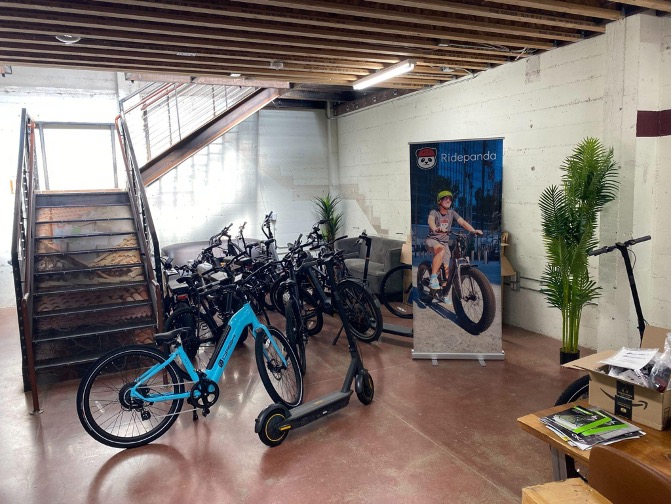
We offer a high-touch experience from beginning to end. When you enter a PandaHub, it’s designed to feel welcoming. There are countless people who have felt intimidated or out of place at traditional bike shops; our goal is to make people – women, first-time riders, inexperienced riders – feel accepted. We provide onboarding at our PandaHubs including test rides. We will show you all the bells and whistles of your bike; we will ensure you feel comfortable riding your bike; we will provide you with a helmet, a lock, and a pump to ensure the rest of your relationship with the vehicle is enjoyable.
Whether it’s the PandaHub’s design or the people we hire, we promote friendliness and provide services for people across the riding experience spectrum. We want the Ridepanda experience to be accessible to people of all walks of life, allowing riders to determine which vehicle fits their body, experience level, and lifestyle.
If you could have dinner with any historical figure, who would that be?
(Chinmay) I would have dinner with Mahatma Gandhi, given that I grew up in India. When I think about Gandhi, I think about an individual who was able to start a worldwide movement – before the age of social media and TikTok, he was able to create community and further the fight for dignity and freedom using noble values. His life was a lesson in sustained progress; the success of Gandhi’s movement did not happen overnight. I would love to learn what was driving him, the anxieties and struggles he faced, and the mechanisms that allowed him to persevere through the challenges. I would also love to hear his take on today’s pressing social issues, especially climate change – what would Gandhi do to create a global community and fight for a better future?
(Charlie) The Buddha. I’d love to get the Buddha’s advice on our world today, in terms of how we are treating the planet and how we are treating ourselves. I admire how his teachings and Buddhism have spread throughout the world in a gentle way, and have helped countless people gain healthy awareness and perspective. I like how the Buddha’s teachings encourage introspection and insight – which for me is important as we examine the way we live and care for the people and planet around us.